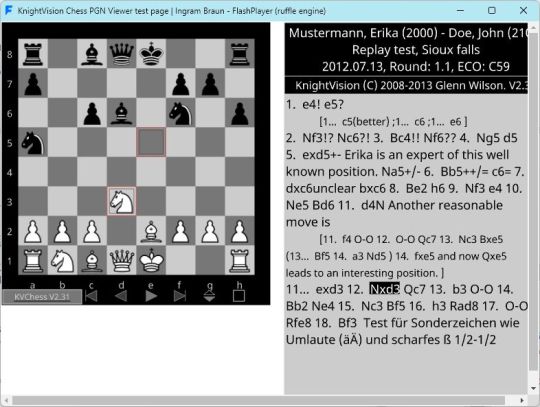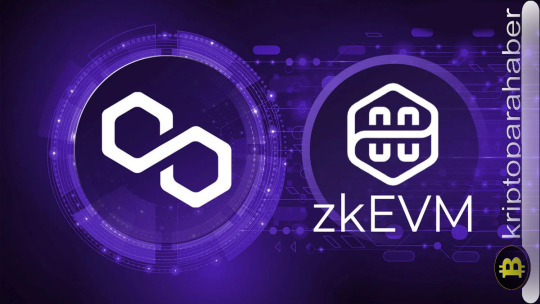#WebAssembly
Text
Google V8 API bridges WebAssembly and asynchronous web
The developers of Google's V8 JavaScript/WebAssembly engine have created the JavaScript Promise Integration (JSPI) API, which allows WebAssembly applications designed for synchronous environments to operate seamlessly in asynchronous environments.
While the JSPI API is currently experimental, it is expected to become a standard across major browsers.
The JSPI API connects synchronous WebAssembly applications with asynchronous web APIs by temporarily pausing the application when it makes a synchronous API call and resuming once the asynchronous I/O operation is completed. This is achieved with minimal changes required to the application itself.
JSPI, the JavaScript Promise Integration API, is a tool developed by the team behind Google's V8 JavaScript/WebAssembly engine that is especially beneficial for a software development agency. It allows WebAssembly applications designed for synchronous environments to operate seamlessly in asynchronous environments. It works by intercepting the JavaScript Promise returned from an asynchronous API call.
This causes the main logic of the WebAssembly application to be suspended and a Promise to be returned from the export used to enter the WebAssembly application. When the asynchronous API call is completed, the WebAssembly application is resumed, allowing it to process the results of the API call.
Working with Promises can be challenging, especially when using WebAssembly, as it does not allow for direct manipulation of Promises. JSPI, the JavaScript Promise Integration API, was created to address this issue.
It enables developers to build WebAssembly applications using synchronous APIs while allowing them to participate in the web's asynchronous ecosystem. JSPI allows developers to work with Promises in WebAssembly, overcoming the limitation of direct manipulation.
JSPI, the JavaScript Promise Integration API, is currently being developed for Intel and ARM64 architectures and is available for various operating systems such as Linux, Windows, macOS, and ChromeOS.
Developers can test JSPI locally by going to chrome://flags in Chrome, searching for "Experimental WebAssembly JavaScript Promise Integration (JSPI)", and checking the box. The Chrome Canary channel is recommended for this. However, JSPI has yet to be available for end-user usage.
Web assembly is considered a major advancement in web application performance. It uses a binary instruction format which allows various programming languages, such as C/C++, C#, and Rust, to be utilized for web development. This greatly expands the options available for developers and can lead to improved performance of web applications.
2 notes
·
View notes
Text
WebAssembly の未来とコンテナ技術への可能性
WebAssemblyは実行環境を選ばないポータブルなバイナリフォーマットであり、今はコンテナ技術の置き換えを狙う動きが強まっている。component-modelやWIT IDLなどの新しい仕様により、構造化データの扱いが容易になり、さまざまな言語のモジュールをまとめてアプリケーションを構築できる未来が見えてきた。ただし、ネイティブバイナリに比べて速度の低さや生成コード量の大きさといった課題もある。
WebAssemblyは実行環境を選ばないという強みを活かし、コンテナ技術の代替として期待されている。新しい仕様の登場により、言語間の連携が容易になり、Polyglotな開発が可能になるのは大きな進歩といえる。一方で性能面での課題も残されているため、最適化に向けた取り組みが重要だと思われる。セキュリティサンドボックスとしての活用も期待できるため、WebAssemblyのさらなる普及と発展に期待したい。
0 notes
Text
PuzzleDrop.Web

WebAssembly Game Demo Instructions:
Controls:
Move Blocks: Navigate the blocks horizontally using the Left and Right Arrow keys.
Shift Colors: Change the colors of the blocks by pressing the Up Arrow key.
Rotate Blocks: Adjust the orientation of the blocks with the Spacebar.
Gameplay:
Your task is to rearrange the blocks so that they form a sequence of 3-2-1 or 1-2-3 in the same color, aligning them either horizontally, vertically, or diagonally. Pay attention to the flashing block; it's a wildcard that can substitute for any number or color in your sequence. Your objective is to keep clearing blocks to progress through the levels, aiming to reach level 7.
Play in your Web browser for free here:
lostsidedead.biz/PuzzleDrop/
0 notes
Text
What are the latest features and enhancements in Node.js for 2024?
As of 2024, Node.js continues to advance with several key features and enhancements that significantly impact node.js app development services. Some notable developments include:
Performance Boosts: Ongoing efforts to optimize the V8 JavaScript engine contribute to improved runtime performance, ensuring faster execution and responsiveness in Node.js applications.
ECMAScript Standards Compliance: Node.js remains committed to staying current with ECMAScript standards, providing developers with access to the latest JavaScript language features and ensuring compatibility with modern web development practices.
Enhanced Security Measures: Security remains a top priority, and new features and updates are expected to bolster Node.js security, addressing potential vulnerabilities and offering developers tools to build more secure applications.
Developer Experience Improvements: Node.js continues to focus on enhancing the overall developer experience. Look for updates in developer tools, debugging capabilities, and frameworks that simplify and streamline the development process.
Containerization and Deployment Optimizations: With the growing prevalence of containerization, Node.js is likely to introduce features that enhance compatibility with Docker, Kubernetes, and other container orchestration tools, facilitating smoother deployment workflows for app services.
Native ESM Modules Support: Native support for ECMAScript modules in Node.js improves code organization and simplifies module management, providing developers with more flexibility and modularity in their applications.
npm Enhancements: The Node Package Manager (npm) is integral to Node.js development, and updates may include new features, optimizations, and improved dependency management tools to facilitate seamless integration of third-party libraries and packages.
WebAssembly Integration: Node.js may introduce features or optimizations to better support the integration of WebAssembly modules within applications, opening up new possibilities for performance-critical tasks.
GraphQL Support: Given the increasing adoption of GraphQL, Node.js might offer improved support and integrations to streamline the development of APIs using this query language, enhancing flexibility and efficiency in building data-driven applications.
Extended Support for Serverless Architectures: Node.js is likely to adapt to the trend of serverless computing, providing features that make it easier for developers to build and deploy serverless applications.
To stay updated on these features and enhancements, it's essential for Node.js app development services to regularly check the official Node.js website, release notes, and participate in relevant community discussions. Embracing these advancements ensures that your Node.js applications leverage the latest tools and capabilities for optimal performance and maintainability.
#NodeJS#JavaScript#WebDevelopment#TechUpdates#Programming#ECMAScript#DeveloperTools#AppDevelopment#CodeOptimization#SecurityInTech#PerformanceImprovements#Containerization#DevOps#OpenSource#WebAssembly#GraphQL#Serverless#npmUpdates#TechInnovation#DeveloperCommunity
0 notes
Text
Recently revised a side project using Sql.js plugin. Updated Sqlite web tool from using ASM to WASM plugin version. Standalone. No server required.

Posted here.
#web app#technology#programming#web application development#productivity#data analytics#database#tech#sqlite#webassembly#javascript
1 note
·
View note
Text

Digital Sitepro : Enhance website security with plugins and avoid
#digitalsitepro#SecurityUpdate#WordPressTips#WordPressPlayground#shopify#WebAssembly#WordPressInBrowser
0 notes
Text
What Comes After Kubernetes?
✅Native Scale to Zero
✅Smaller API Surface
✅Configuration Language
✅Orchestration for {WebAssembly, Functions, something else}
I still feel that a PaaS-like platform characterized by ease and simplicity is long overdue.
0 notes
Text
Running Java Applets and Flash Videos in Current Browsers


Screenshot Knightvision Chess PGN viewer on ingram-braun.net June 2023.
One of the great successes of the early years of ingram-braun.net was the Chess Replay Utilities Synopsis which provided an overview over all then available chess game viewers ready for embedding in websites. Most of the projects enlisted there are now defunct. However, my demo pages are still there. Even of those viewers that were carried out as Java Applet or Flash Video. Both environments were removed from current browsers years ago. So i wondered if I can get my demo pages to run today?
Probably the most promising way is to install contemporary browsers and extensions on a Virtual Machine but it would be very much work only to view the demo pages here. And as my site is TLS only this might run into certificate errors.
In principle you can download the *.jar or *.swf files and feed a stand alone app with them. Alas, chess game viewers have the *.pgn files outside so this probably won't work here. There are browser plugins for both formats. The Chrome addon CheerpJ Applet Runner converts Java into WebAssembly and JavaScript on the fly. It works well with the Internet Chess Club. It fails miserably on ChessTutor™. The other Java Applets render the graphical interface as expected but fail to load the games in an operational manner. The manufacturer Leaning Technologies has announced a full Java VM in WebAssembly. Hopefully we will see better results then.
Flash Video (*.swf = ShockWave Flash) should still be working in Lunascape Browser out of box. But this failed to me. There is an extension FlashPlayer - SWF to HTML for Chrome and Firefox browsers which provides a sandboxed JavaScript implementation of a flash viewer. It runs perfectly on DGT Chesstheatre. And it works on KnightVision Chess PGN Viewer, too, but fails to navigate into alternate lines.
All in all I feel it was a good decision not to remove the demo pages but preserve them as sort of archivalia.
Read the full article
0 notes
Text
Blazor WebAssembly is a framework that allows developers to build interactive and dynamic web applications using .NET Core and C#. It brings the power of .NET to the front end, enabling developers to create robust and performant web applications.
𝐇𝐞𝐫𝐞 𝐚𝐫𝐞 𝐭𝐡𝐞 𝐤𝐞𝐲 𝐚𝐬𝐩𝐞𝐜𝐭𝐬 𝐨𝐟 𝐮𝐬𝐢𝐧𝐠 𝐁𝐥𝐚𝐳𝐨𝐫 𝐖𝐞𝐛𝐀𝐬𝐬𝐞𝐦𝐛𝐥𝐲 𝐟𝐨𝐫 𝐟𝐫𝐨𝐧𝐭-𝐞𝐧𝐝 𝐝𝐞𝐯𝐞𝐥𝐨𝐩𝐦𝐞𝐧𝐭:
➡️𝐅𝐚𝐦𝐢𝐥𝐢𝐚𝐫 𝐃𝐞𝐯𝐞𝐥𝐨𝐩𝐦𝐞𝐧𝐭 𝐄𝐧𝐯𝐢𝐫𝐨𝐧𝐦𝐞𝐧𝐭: With Blazor WebAssembly, developers can leverage their existing knowledge of C# and .NET Core to build web applications. This eliminates the need to learn additional languages or frameworks.
➡️𝐂𝐨𝐝𝐞 𝐒𝐡𝐚𝐫𝐢𝐧𝐠: Blazor WebAssembly enables code sharing between the client and server, allowing developers to reuse components and logic on both sides. This improves productivity and reduces development time.
➡️𝐑𝐢𝐜𝐡 𝐔𝐬𝐞𝐫 𝐈𝐧𝐭𝐞𝐫𝐟𝐚𝐜𝐞𝐬: Blazor WebAssembly supports the creation of rich and responsive user interfaces using a combination of HTML, CSS, and C#. It provides a wide range of UI components and libraries for creating visually appealing and interactive web applications.
➡️𝐏𝐞𝐫𝐟𝐨𝐫𝐦𝐚𝐧𝐜𝐞: Blazor WebAssembly applications run directly in the browser, eliminating the need for server round-trips for every interaction. This results in faster response times and improved performance.
➡️𝐒𝐞𝐚𝐦𝐥𝐞𝐬𝐬 𝐈𝐧𝐭𝐞𝐠𝐫𝐚𝐭𝐢𝐨𝐧 𝐰𝐢𝐭𝐡 .𝐍𝐄𝐓 𝐄𝐜𝐨𝐬𝐲𝐬𝐭𝐞𝐦: Blazor WebAssembly seamlessly integrates with the existing .NET ecosystem, allowing developers to leverage existing libraries, frameworks, and tools. This provides access to a vast array of resources for enhanced development capabilities.
➡️𝐂𝐫𝐨𝐬𝐬-𝐏𝐥𝐚𝐭𝐟𝐨𝐫𝐦 𝐃𝐞𝐯𝐞𝐥𝐨𝐩𝐦𝐞𝐧𝐭: Blazor WebAssembly supports cross-platform development, allowing developers to build web applications that run on multiple platforms and devices, including desktops, mobile devices, and IoT devices.
➡️𝐃𝐞𝐛𝐮𝐠𝐠𝐢𝐧𝐠 𝐚𝐧𝐝 𝐓𝐨𝐨𝐥𝐢𝐧𝐠: Blazor WebAssembly provides robust debugging and tooling support, including browser-based debugging, code editors with IntelliSense, and a rich set of development tools. This streamlines the development process and enhances developer productivity.
➡️𝐒𝐞𝐜𝐮𝐫𝐢𝐭𝐲: Blazor WebAssembly provides built-in security features, including protection against cross-site scripting (XSS) attacks and other common web vulnerabilities. It also supports authentication and authorization mechanisms for secure application development.
Blazor WebAssembly offers a powerful and flexible approach to front-end development, enabling developers to leverage their existing .NET skills to create feature-rich and performant web applications.
𝐅𝐨𝐫 𝐦𝐨𝐫𝐞 𝐢𝐧𝐟𝐨𝐫𝐦𝐚𝐭𝐢𝐨𝐧: www.qservicesit.com

0 notes
Link
This video will explore the potential of WebAssembly (WASM) as a game-changer in the world of containerization. While Docker has been the go-to solution for packaging and deploying applications in containers, WASM offers a faster, more secure, and more flexible alternative.
0 notes
Photo

The death of web apps can be seen coming as Progressive Web Apps make their mark ✅. They have lessened the website loading time and can work offline for many apps alone with an elevated user experience. For developers, it benefits them with cost reduction. According to Hubspot, HTML, JavaScript, WebAssembly, React, CSS or Angular will be used to develop PWAs in 2023.
#website#websitedevelopment#progressivewebapps#mobile#mobileapp#mobile development#HTML#javascript#webassembly#angular#react#css#provider#technology#development#bit01
0 notes
Text
cloud-music
The project that I discussed in my previous post is now live. Go there if you want to hear/see the first two pieces: https://gogins.github.io/cloud-music/.
1 note
·
View note
Text
1 note
·
View note
Text
WebAssembly- Introduction and What it is used for?
WebAssembly- Introduction and What it is used for?
Read Here:
If you liked the post, don't forget to share the post.
0 notes
Text
MATIC fiyatı 4 ayın en yüksek seviyesine ulaştı: MATIC 1 dolara çıkabilir mi? İşte detaylar...
Polygon’un yerel kripto para birimi MATIC bugün çarpıcı bir yükseliş yaşadı. Fiyatını yüzde 7,8 arttırarak 0,81 doları geçti ve kripto para piyasasındaki ralliye katıldı. Bununla birlikte MATIC haftalık kazancını yüzde 22’ye çıkardı. Aylık kazancı ise yüzde 45’e ulaştı. Bu yükselişin ardında MATIC kurucu ortağının önümüzdeki günlerde yapacağı açıklamalar ve MATIC fiyatının 1 dolara…

View On WordPress
0 notes
Text
Use SQLite with no installations or configuration steps required. A portable database which only requires a browser to run.
#technology#web app#web application development#tech#programming#webassembly#sqlite#database#data management#productivity#javascript
0 notes